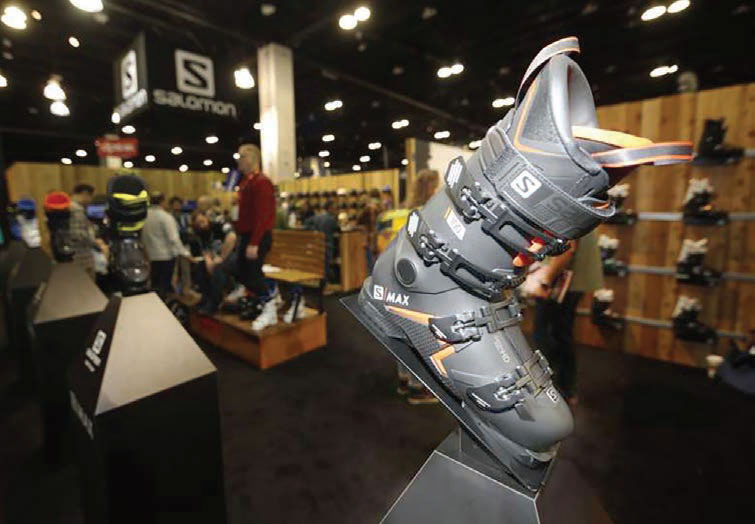By Brice Wallace
Outdoor Retailer, whose tradeshows attracted tens of thousands of people to Salt Lake City twice a year, has moved its shows to Denver. As described by OR, those people included “decision-makers, influencers, stakeholders, key buyers and athletes that influence the outdoor market.”
One group of people that never made it inside the doors? Consumers. And that represents an opportunity for Salt Lake City, according to a recent event focusing on Utah’s outdoor recreation industry.{mprestriction ids="1,3"}
At a fireside chat and panel discussion organized by Access Salt Lake, several industry executives said the city should seek to have events like OR but shape it to connect product manufacturers with consumers rather than manufacturers with authorized buyers.
That direct-to-consumer model “used to be sheer death if you did that,” according to Michael Beverly, president of camping gear company Ace Camp. He said that one potential large buyer at an OR show flatly told him, “If you’re on Amazon, I’m out.”
But with new technologies the entire retail world is moving to that model, so creating events with a similar structure makes sense, speakers said.
Robert Workman, former owner of Provo Craft and Novelty Inc. and CEO of Goal Zero, which offers portable power, solar panels, solar kits, lights and accessories, said he has witnessed other industries — wholesale floral and hobbies and crafts — wither because they opted to not involve consumers.
“If we’re not careful in our industry, if we don’t figure out a way to bring the consumers in on this in the right way — and there’s a lot of work to do, I don’t have the answers, but combined we will have the answers — we’re missing out on a really creating something fun,” Workman said.
When he began in business 42 years ago, he said, there were seven tiers between the manufacturer and consumer. A year ago, there were three: manufacturer, dealer or chain store, and consumer.
“Today, there are two,” he said. “It’s from the product manufacturer direct to the consumer. Now, that doesn’t mean that we don’t have distribution, that we can’t sell to dealers or the distributors. But what that means, though, is the product people have got to get their act together and sell direct to the consumer and pull it through the distribution channel.
“We’ve got everything here, and if we can think about what the future is, whatever we’re going to do, is involve the consumer. Appeal to them and invite them into the industry.”
Weeks earlier, Workman had attended what he described as Korea’s version of the OR show. It had about 30,000 attendees, including manufacturers, buyers, distributors and consumers.
“What impressed me the most about that is that the manufacturers got to be right with the people that ultimately buy their product, and the dealers and the distributors could observe what was going on there,” he said.
Many trade shows today are essentially “a great reunion” with great interaction in a “good old boys network” but lacking the consumer element, he said.
Phil Case, managing director at Fluid Marketing, said the retail model is changing. “As brands go to market, not only is it cutting out some of the distribution chain — so it’s not distributor to retailer to consumer always — but in addition to that, we have to think about ‘what are consumers looking for?’”
As with the Korean show, retailers could see how consumers are interacting with the brands directly. “Instead of having the buyers be the judge of ‘Is this a good product or a bad one?’ actually have the consumers come,” Case said. “They’ll vote with their pocketbooks, just like they do on Amazon every day.”
Others on the panel suggested smaller, product-centric shows to replace OR. Product PowerUp, bringing together people specializing in product development, had 300 attendees last fall in its first year. It’s set for Sept. 20-21 this year at the Mountain America Expo Center. That is one way to bring together Utah’s outdoor products companies, Beverly said.
“From my perspective, I feel we need to bring Utah outdoor companies closer together,” he said in answering the question about what to do after OR’s departure from the state. “I know there’s competitive issues here or there, but if we can do half the job of what Colorado has done, they’ve really built that unity. I’d like to unify.”{/mprestriction}








